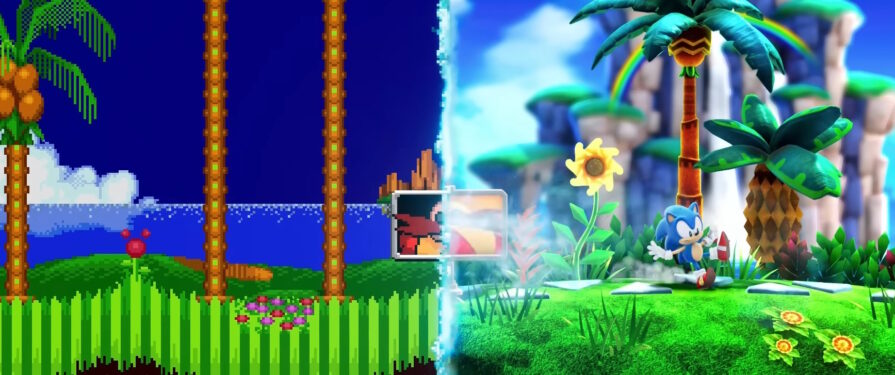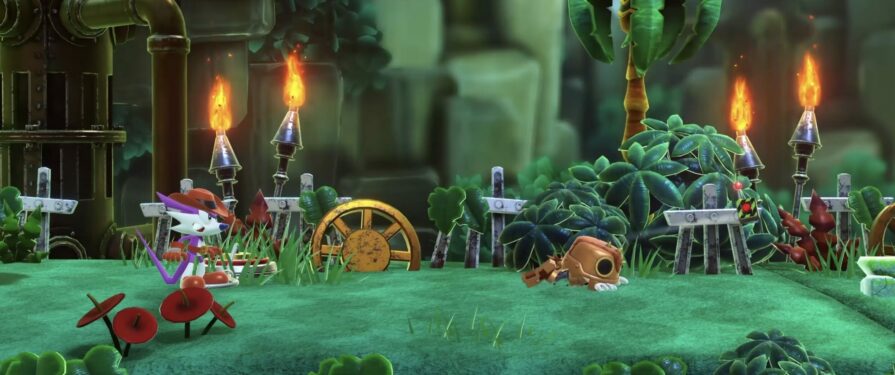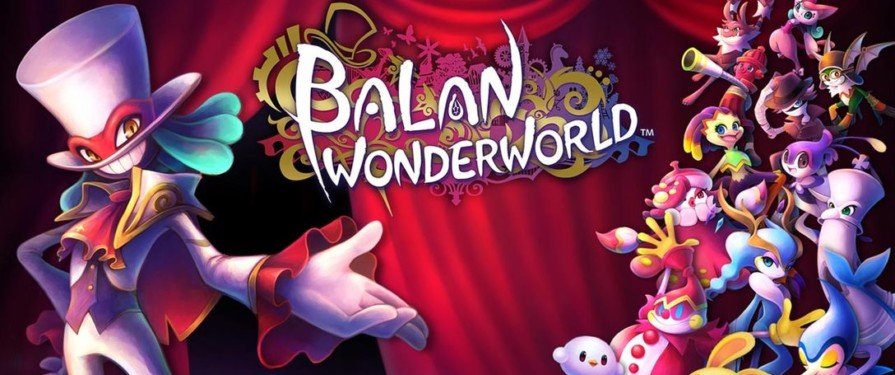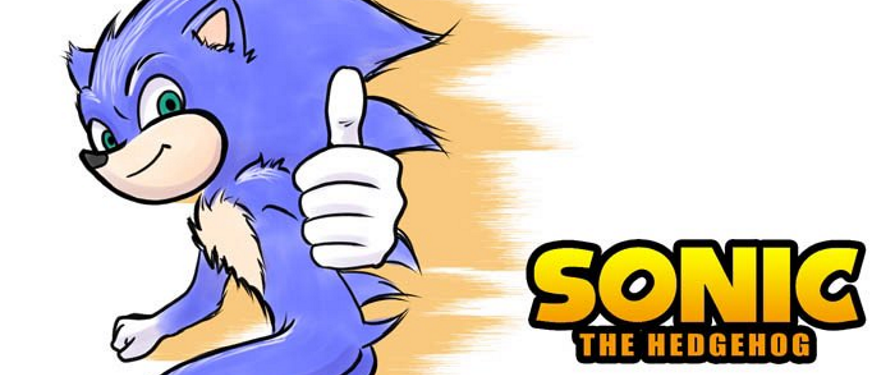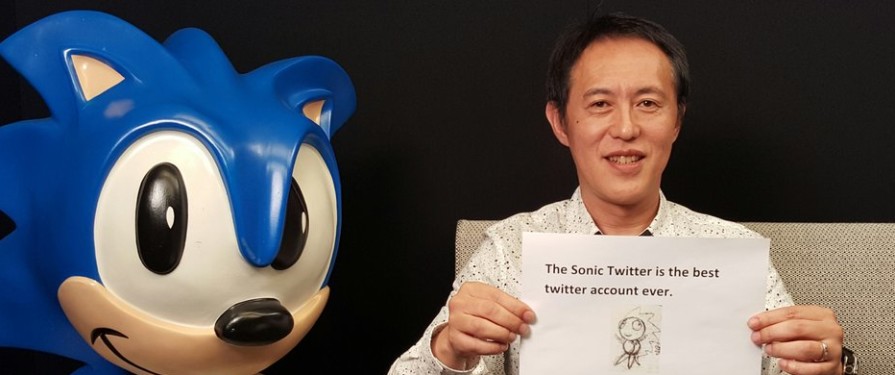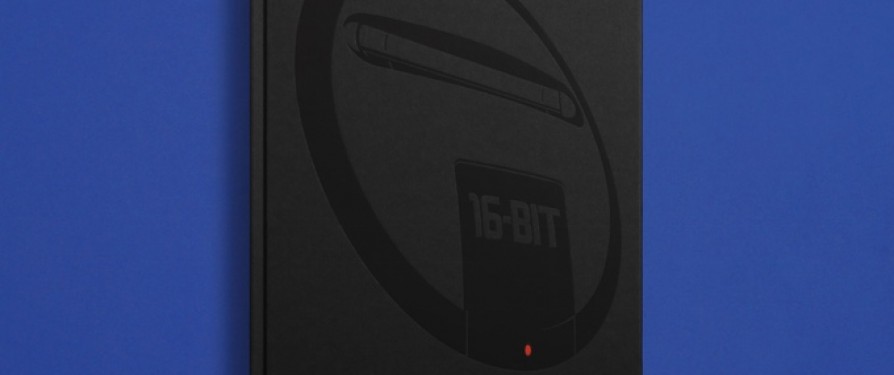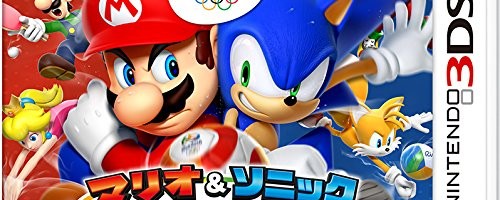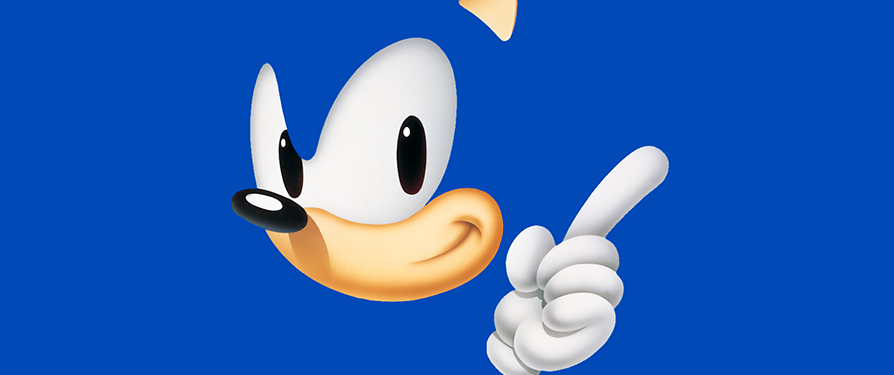In an interview with VGC, Takashi Iizuka noted that Naoto Ohshima and his company Arzest are the primary developers of Sonic Superstars, with long time series composer Jun Senoue working on the game’s audio.
Continue reading Ohshima, Arzest, and Senoue: We Know Who’s Making Sonic SuperstarsIGN Japan Sonic Superstars Footage Reveals In-Game Look of Fang, New Character, Game Play Details
While we’ve uploaded a significant amount of off-screen snippets of Sonic Superstars, IGN Japan has uploaded an HD quality video containing both acts of one of the game’s levels, “Speed Jungle.” You can find the video here, but we’ve decided to take the time to highlight some interesting details from the video below:
The level has a grappling hook gimmick, which can be activated by hitting a yellow switch floating above it. It is then possible to run up it! There are also some badniks that disguise themselves as ring boxes, and fly when you get close.



Later on in the level, we see a few more gameplay elements. There’s a holographic pulley that the player needs to hold onto while a timer counts down to earn rings. There are four pulley, meaning up to four players can use it at once. We also see a spinning blue portal above a checkpoint post, which likely leads to some sort of bonus stage. Finally, there’s a part of the game level where you can see Tails running in the background. In footage our own Jason Berry took of this level, we saw Sonic running in the background at one point while someone played Amy. So maybe these moments are meant to convey other characters participating in the adventure during single player?



Next up, we see the first of those “ginormous creatures” mentioned in the PR materials: a fat flicky! He appears in a cutscene introducing Speed Jungle’s first mini boss, which utilizes a grappling hook similar to what was used in the level earlier. Sonic must spindash up it in order to hit the boss. Afterwards, the flabby flicky celebrates with Sonic at the end of the level.




Act 2 introduces a new gimmick, where Sonic must use a glowing butterfly to illuminate a darkened area of the level. We also get our first look at Sonic’s edge-of-the-platform animation!


Next up, we get to see how physics work on the games grinding vines! Rather than being automated segments with automatic momentum, or something you can fall through if you lose speed, Sonic will instead simply walk when he loses momentum. This is demonstrated when a frog badnik slows Sonic down and he has to regain his speed to grind again.




The final boss attacks Sonic with a extendo arm that goes through the ground, and missiles. Rather than attack the boss directly, Sonic has to avoid the arm until it eventually strikes the boss on its own, and can also damage the boss by knocking blue missiles into it.


Finally, we got a look at an end level cutscene! We got to see this game’s version of an animal capsule, as well as the in-game models of Fang and a mysterious new character (almost certainly the one that was designed by Naoto Ohshima). Fang and the newbie got a humorous little cutscene that also calls back to a trap utilized by Eggman in the first episode of Sonic Mania Adventures!



Read More...
Square Enix Brings Original Sonic Creators Back Together for New 3D Platformer Balan Wonderworld
We always hoped to see the day that original ‘Sonic the Hedgehog’ creators Yuji Naka and Naoto Ohshima would get back together on a brand new project… but we weren’t expecting to to happen at Square Enix! The Japanese RPG publisher has just announced a brand new 3D platformer called Balan Wonderworld, featuring colourful characters and whimsical gameplay that makes you feel like the original Sonic Team never left. Continue reading Square Enix Brings Original Sonic Creators Back Together for New 3D Platformer Balan Wonderworld
Read More...
Yuji Naka, Naoto Ohshima, and Hirokazu Yasuhara Respond to Sonic Movie’s Design Change
Over the past week, the internet has been all a buzz over the first trailer for the upcoming Sonic movie. Well three people in particular have offered some words regarding the film, all of which Sonic fans should recognize.
Read More...
Happy Birthday Naoto Ohshima!
Video game legend and former Sonic Team character designer Naoto Ohshima turned 54 today. Ohshima is best known for designing Sonic the Hedgehog and Dr. Eggman, as well as directing Sonic Team classics like Sonic CD, NiGHTS into Dreams and Burning Rangers. After leaving Sonic Team following the completion of Sonic Adventure, Ohshima formed Artoon, where he would go on to create Blinx the Timesweeper (an attempt at creating a platforming mascot for the original Xbox) and act as a producer for a few Yoshi games.
These days, Ohshima serves as the Vice President of Arzest, a Japanese video game studio he helped form after leaving Artoon in 2010.
From all of us here at the Sonic Stadium, happy birthday Naoto Ohshima!
Check out some art from Ohshima below:






Read More...
Happy 20th Birthday Sonic Adventure!
Sonic Adventure celebrates it’s 20th anniversary today after hitting screens in Japan way back in 1998.
We take a look back at what made this game one of the most enduring Sonic the Hedgehog titles, and why SA1 was such a trailblazing title in not only the series, but in video game history.
The Hype
SEGA of the 90’s certainly knew how to pull out all of the stops when it came to generating a buzz around the next Sonic game, and the anticipation of what was in store brought kids and grown-ups alike to fever pitch…and the announcement of Sonic Adventure was no different.
On the 22nd of August 1998, a few thousand lucky punters were invited to attend the first presentation of Sonic Adventure at the Tokyo International Forum – an event that was luckily recorded for posterity (which you can watch below). The first foray into the world of 128-bit high speed action was introduced by Yuji Naka, entering the stage in Rock star fashion by emerging from a balloon to a face-melting guitar riff.
https://www.youtube.com/watch?v=8LEoZs_s_oQ
The event also showcased a “Making of Sonic Adventure” semi-documentary presented in a light-hearted manor, in which Sonic Team embarked on a fact-finding trip to central America to visit the Tulum Ruins, the Caribbean Sea, the Tikal Ruins of Guatemala, and Machu Pichu amongst other locations – all of which influenced stages in the game.
Some members of the Team even became ill on their research trip from altitude sickness – talk about dedication to the cause!
The design
Sonic has undergone several redesigns in his 27 ½ year history (we won’t mention the most recent!), but most fans regard the Sonic Adventure iteration of the neon protagonists to be one of the most successful. Characters traded their pot-bellies in for coloured irises and longer limbs, allowing for some incredibly elastic posturing that would become Yuji Uekawa’s instantly recognisable stylisation which remains the norm for modern Sonic artwork to this day. While the classic design of Sonic has since been translated to 3D, the modern Sonic style allowed for a much easier transition to the medium.

Dr Eggman was given a particularly significant redesign, along with both western and eastern franchises aligning on the Japanese name (although Robotnik would be kept as the name for his grandfather in the sequel).
The story mode
Story was not an element that featured heavily in Sonic the Hedgehog games until Sonic Adventure; in fact, one of the initial ideas while the game was on the development bench was to in fact create a Sonic RPG. For Sonic Adventure to include cut scenes and a narrative was a significant change to the game, and novel in that it in itself was derived from the intertwining stories of six different protagonists (one in fact executed in very few other video games at the time).

The seventh and final story in the game, and the true conclusion only accessible once all six main stories were completed, crescendos in the final showdown with Chaos with the player taking the controls of Super Sonic – something undoubtedly cemented as one of the most memorable video game conclusions for many Sonic fans.

Sonic Adventure was also the first Sonic the hedgehog game to include voice acting (besides SEGASonic Arcade) – and while the jury might still be out on the quality of the dialogue, SA1 is definitely one of the most quotable!
The soundtrack
Hum the Green Hill Zone theme and just about any video game fan will tell you that its from a Sonic game – indeed, the soundtrack has always been a core component of what makes a Sonic game so, well, Sonical!
While Sonic Adventure is not the first video game to include vocal tracks (Sonic CD was doing that five years before) it is one of the first to have a fully-fledged album-like feel, complete with a swathe of character themes and a main anthem Open Your Heart, performed Crush 40, that is unparalleled in magnitude. The intro FMV undoubtedly still brings goose bumps to many!
The shift to a rock-centric soundtrack, a decision made by first-time Sonic Sound Director Jun Senoue, was a bold move; the music for the original trinity of Sonic games were after all composed by Masato Nakamura of Dreams Come True (and most likely Michael Jackson), resulting in a prolific pop influence. However, the move would prove highly successful and would be followed up with the equally popular Live & Learn in the sequel.
The magic of the soundtrack however derives from a brilliant use of multiple genres – rock, pop, rap, electronic, and jazz to name a few all feature throughout.
The game’s soundtrack has endured long enough that it has been celebrated since with the Sonic Adventure Music Experience, which saw Senoue-san and company re-record and perform key songs from the game and its sequel.

DLC
The Dreamcast was the very first games console to provide a connection to the internet as standard, and as such, Sonic Adventure is the very first game in history to include downloadable content! This came in the form of the Sonic Adventure Christmas download, which was only available for the first few days of release (it was no longer available after Christmas day). While this content only included Christmas trees in station square which played played music and gave a seasonal message when interacted with, it was another example of how SEGA and Sonic games were well ahead of the curb.
Happy birthday Sonic Adventure!
What makes Sonic Adventure special to you? Let us know in the comments!
Read More...
Is This The Very First Sonic Plush Ever Made?
Before Sonic was a franchise, before he was a household name, before he even had a single game, he was just an idea and a pitch. It’s quite common knowledge that Yuji Naka and Naoto Oshima along with a few others had to pitch the idea of Sonic to Sega higher ups in order to get the green light for development.
Part of this pitch included ‘a small Sonic plush toy’, this has been a matter of record in a number of different interviews and articles, such as the History of Sonic book which came out a few years ago.
Yet, to this day, nobody has ever seen this plush… well… that might have changed.
 Naoto Ohshima, the man who designed Sonic has lately been posting a lot of very interesting pieces of artwork and design on his Facebook page, including a rather curious plush.
Naoto Ohshima, the man who designed Sonic has lately been posting a lot of very interesting pieces of artwork and design on his Facebook page, including a rather curious plush.
Whilst he’s not confirmed it is the original plush from the pitch, there’s a number of clues to suggest it might be, first of all, there are no tags of any kind, it’s a homemade item, secondly, it stands upright on it’s own accord, there are only a handful of Sonic plushies out there which do this and none of them look anything like this.
Another big clue is that it is VERY high quality, this was not made for mass market, it was either made to order or was an extremely limited run.
Speaking to a few Sonic Merch collectors, none of them have been able to identify it which would either put this as a custom job… or… the legendary plush. If it is the plush from the pitch, it would make this product 001, the very first piece of Sonic merch ever to have existed and a one of a kind.
The watch on his wrist is a different product which was released a few years after Sonic 1. If we get anymore details as to the origins of this mystery product, we’ll let you know.
Source: Naoto Ohshima Facebook.
Read More...
Sega Mega Drive: Collected Works Art Book Guns for Second Print Run
A reprint of a critically-acclaimed art book covering the history of the Sega Mega Drive is being crowdfunded on Kickstarter. Read Only Memory’s ‘Sega Mega Drive/Genesis: Collected Works’ was originally released in 2014 and included interviews with Sonic creators Yuji Naka and Naoto Ohshima, along with illustrations and concept drawings of the 16-bit console’s best titles. Continue reading Sega Mega Drive: Collected Works Art Book Guns for Second Print Run
Read More...
Yuji Naka wishes to pitch Mario & Sonic action game to Takashi Iizuka
Just recently, Yuji Naka and Naoto Ohshima spoke with the Japanese magazine Famitsu, and commented on the origins of the Mario & Sonic series, as well as Sonic joining Super Smash Bros. Brawl. But Yuji Naka also said that he wishes to give another presentation to Sonic Team’s Takashi Iizuka about a potential Mario & Sonic action game. See the quote below.
Continue reading Yuji Naka wishes to pitch Mario & Sonic action game to Takashi Iizuka
Read More...
Arzest, formed by key ex-Sega folks, worked on M&S Rio 2016 3DS
httpv://www.youtube.com/watch?v=HSVEXbkytkM
The names you’re about to see may surprise you.
A user by the name of Cyberman65 has uploaded the true ending and credits of Mario & Sonic at the Rio 2016 Olympic Games for 3DS, and one company in particular mentioned (at 3:43 in the video above) who assisted in the development of the game along with the people who specifically worked on the game, will be very familiar to Sonic fans.
That company is Arzest, and the company was co-formed by none other than Naoto Ohshima (along with fellow ex-Sonic Team and Team Andromeda (Panzer Dragoon) veterans Yoji Iishi and Yutaka Sugano), who fans will very likely know is one of Sonic’s creators, most known for having originally designed his and Eggman’s appearances.
Arzest’s portion of the credits are as follows:
ARZEST Corp.
Directors: Masahito Shimizu, Noboru Shirasu
Art Director: Yoshihide Sasagawa
Technical Director: Tomoo Kondo
Game Designers: Jun Imanishi, Daisuke Hagiya, Ryo Sato, Takashi Nakashima, Mitsunori Yamazaki, Tadaaki Moriya, Rena Sakaguchi, Hidemi Hamada, Makoto Hara, Gen Murayama, Gen Shiomi, Koji Arai, Akihiko Sato, Teppei Iwanaga, Mitsunori Shimazu, Motoharu Nakajima
Stage Artists: Daisuke Kojima, Kana Fujibayashi, Ayana Katsumata, Masaya Takahashi
Character Animators: Hiroshi Arai, Eriko Kato, Yuya Iwama
Graphic U.I. Artists: Yuno Endoh, Chihiro Ishikura, Chika Yamamoto, Makoto Sonoda, Akihito Kato, Tsutomu Hatanaka, Tatsuya Ishikawa, Michiru Sasamori
SFX Artists: Tatsuro Matsunaga, Yasuhisa Nakagawa
Cutscene Artsist: Yuichi Nakamura
Programmers: Shinji Iseki, Naotaka Ueda, Kouichi Watanabe, Mikio Kume, Kenji Miyakawa, Kohei Iwata, Takanori Yoshida, Manabu Kobayashi, Akihiko Ohyama, Kazuya Azuma, Kenichi Otani, Hiroshi Fujinishi, Toshinori Suzuki, Norio Suzuki Fumie Morishita
Art Supervisor: Masamichi Harada
Supervisor: Naoto Ohshima
Producer: Yutaka Sugano
Executive Producer: Yoji Iishi
Naoto Ohshima would work with Sega on Sonic games and more until Sonic Adventure 1 on Dreamcast, on which he filled the roles of CG Movie Producer, Story Event Coordinator, one of the Event Motion Designers, and Opening Movie Editor. Afterward in 1999, he left along with Yoji Iishi and Yutaka Sugano (and numerous others) to form a company called Artoon. Their first game would be Pinobee for the Game Boy Advance (it also got a PS1 port later on).
They’re most known for projects like Blinx the Time Sweeper on the original Xbox, Blue Dragon on Xbox 360, and also Yoshi’s Topsy Turvy on the GBA and Yoshi’s Island DS. One of their final works under the name was Flingsmash for Wii directly with Nintendo. In 2005 Artoon was bought by AQ Interactive (now after mergers and renames they’re part of Marvelous). In 2010, AQ decided to absorb all of their developers (Artoon, Cavia, and Feelplus), and thus Artoon would cease to exist as a name.
In that same year, Artoon’s founders including Naoto Ohshima would leave AQ and form Arzest, along with many other Artoon folks.
Their first task was working on Wii Play Motion for Nintendo, alongside many other companies like Spike Chunsoft (makers of Shiren the Wanderer, among many other franchises), Good-Feel (Yoshi’s Woolly World, Kirby’s Epic Yarn, and Wario Land: Shake It), Skip (Chibi-Robo), Vanpool (Dillon’s Rolling Western), ND Cube (Mario Party after MP8), Mitchell Corp (Polarium) and… Prope, formed by none other than Yuji Naka himself (they made games like Rodea the Sky Solider on Wii and “Ivy the Kiwi?” also on Wii and DS). Arzest handled three mini-games; Spooky Search, Jump Park, and Cone Zone. Prope on the other hand only made one; Trigger Twist.
Speaking of which, it’s actually a known fact that Yuji Naka and Naoto Ohshima actually BOTH came up with a ghost-themed mini-game and Naoto Ohshima got to keep his in the end. Yuji Naka mentioned this in the Iwata Asks for the game;
Right. But it got shelved it. When this project came up, we worked on it some more and made a prototype, but it clashed with Oshima-san’s project. They were both about ghosts. Ours was removed from competition, but in the two weeks left for prototypes, we made Trigger Twist.
Great minds think alike as they say.
Back to Arzest. Their first major project was Yoshi’s New Island for 3DS. Since then they’ve mostly been focused on mobile efforts including helping with Mistwalker’s Terra Battle and also a game called Boost Beast.
Mario & Sonic at the Rio 2016 Olympic Games for 3DS is their first major game since, but they actually are not the only developer who assisted with the project. Spike Chunsoft also lent a hand as well.
To be clear, Arzest’s role seems more of a smaller hand, rather than fully taking charge of it like with Yoshi’s New Island which was officially an Arzest-developed game. But it’s very surprising to see Naoto Ohshima actually officially work on a Sonic-related game for the first time since leaving Sega in 1999. However some might point out he was listed as Special thanks for Sonic Generations HD, but there’s no certainty of what that thanks is for. He very likely had no real part in its development. In fact, MobyGames, which collects credits for a lot of games, makes no mention of him, and I also watched a video of the credits in the game, no mention either, I even checked a video of the credits of the 3DS version (skip to 14:05), nothing. I honestly wouldn’t believe that claim at all to begin with.
And there you have it. What are your thoughts on the news of Arzest’s involvement with the game? Let us know in the comments below!
Read More...
Ohshima: I Wanted A ‘Back To The Future’ Sonic
 Sonic Team legend and Sonic the Hedgehog co-creator, Naoto Ohshima, spoke to Gamasutra about some of his past work, including his time directing Sonic CD and the inspiration for the blue blur’s sneakers.
Sonic Team legend and Sonic the Hedgehog co-creator, Naoto Ohshima, spoke to Gamasutra about some of his past work, including his time directing Sonic CD and the inspiration for the blue blur’s sneakers.
After discussing NiGHTS Into Dreams, attention turned to Ohshima’s Mega CD project and the reason behind time travel – a theme he has since revisited with Blinx: The Time Sweeper on the Xbox. “I wanted a Sonic where the levels changed on you — where Sonic would go really fast, like in Back to the Future, and bang, wind up in a different place.”
Ohshima also spoke of the time-travelling cutscene, displayed whenever Sonic reaches a speed in Sonic CD that sends him to the Past or Future. The original plan was to have an instant change, following a sonic boom, but apparently it was not technically possible so the loading cutscene stuck.
Ohshima: What I really wanted to do was just have this sonic boom, with a flash, and have the level change on you instantly. We just couldn’t manage it on the hardware, though, so instead there’s that sequence that plays while it’s loading. (laughs) I kept fighting and fighting with the programmers, but they said it just wasn’t possible.
Gamasutra: I bet they probably could have done it.
Ohshima: I know! (laughs) If Naka was doing the programming, I think it could’ve been done.
Speaking of Yuji Naka, the designer also spoke of how his team worked in Japan on Sonic CD in tandem with Naka’s SEGA Technical Institute in the U.S. on Sonic 2.
We exchanged information, of course, talking about the sort of game design each of us was aiming for. But Sonic CD wasn’t Sonic 2; it was really meant to be more of a CD version of the original Sonic. I can’t help but wonder, therefore, if we had more fun making CD than they did making Sonic 2 [because we didn’t have the pressure of making a “numbered sequel”].
Sonic the Hedgehog’s original design came up again, with discussion of how the character was created for the American market leading to questions of Sonic’s iconic blue, red and white colours. Ohshima said that, as we know, the blue was to symbolise SEGA, but what was more interesting was yet another tenuous link between Michael Jackson and the blue blur. Apparently Sonic’s shoes are directly inspired by Jackson’s Bad album cover. “I also thought that red went well for a character who can run really fast, when his legs are spinning.”
Naoto Ohshima left SEGA many years ago to lead Artoon, but now has management duties at sister development studio Cavia, which recently finished Resident Evil: Darkside Chronicles and is working on Square Enix’s Nier. But with this change in approach to more Western, adult-oriented games, does Oshima still have time in his life to go back to the mascot platforming gig?
Ah, well, I’m making a game like that right now. (laughs) I can’t quite talk about that yet, though. In more general terms, the game needs to be something that anyone is able to play, and it needs to have one thing or element that is brand new, that hasn’t been done before.
Shine on, you legend. Shine on.
Read More...
Ohshima and Sakaguchi Announce New RPG
Not exactly pertaining to Sonic, but we all like to know just how well Naoto Ohshima is getting on since he separated himself from SEGA to form Artoon some years ago. Turns out the original character designer is teaming up with Mistwalker’s Hironobu Sakaguchi to create an action RPG for the Nintendo DS called Away.
Not a lot of details are known about the game, as it has just been revealed in the latest issue of Famitsu in Japan. What we do know is that it involves rescuing helpless villages from underground dungeons – with the environments changing every so often, forcing you to constantly adapt to your surroundings. Rescuing more people will expand the village and open up new events and secrets too, we’re told.
Sounds like an interesting concept, we’ll be keeping our eyes on this one.

